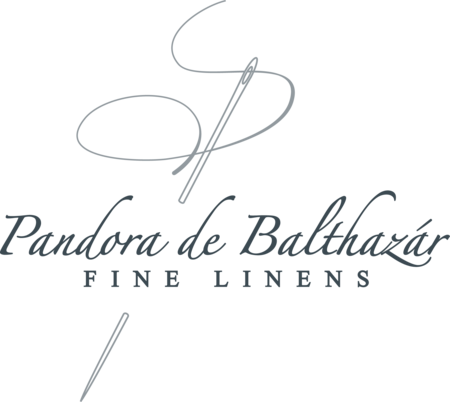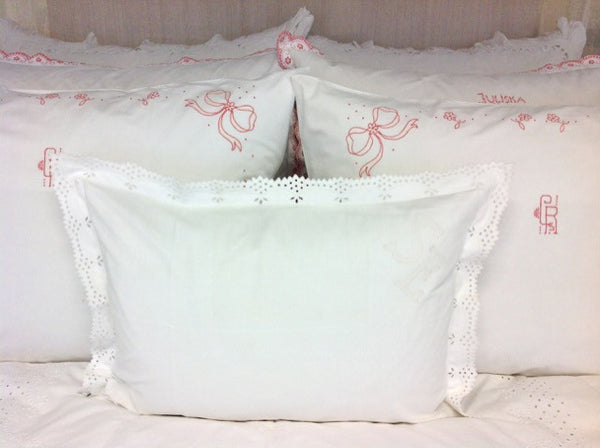
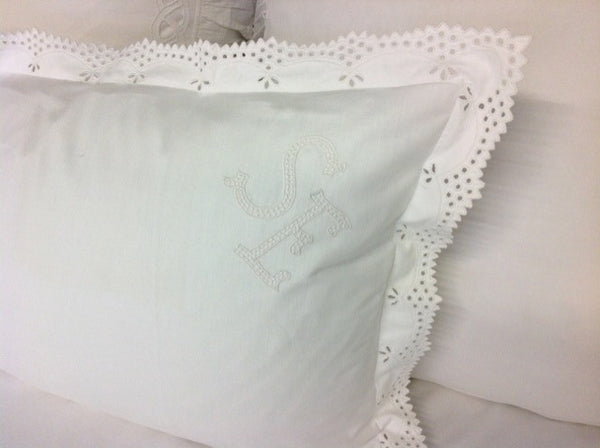
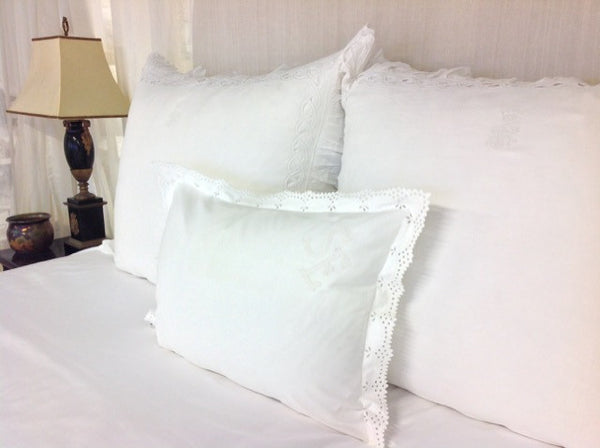
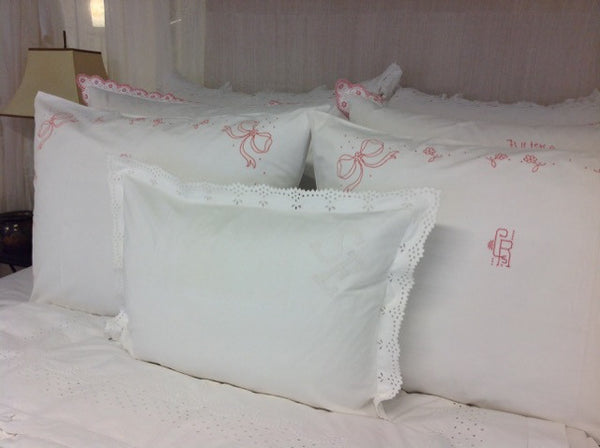
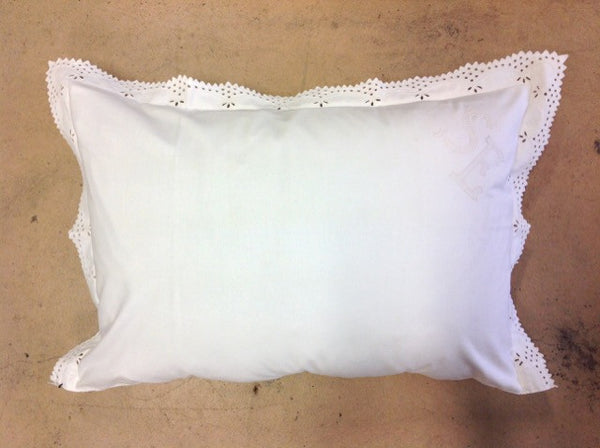





This 26.5" x 18" standard handmade cotton sham with an "SE" monogram has a pretty eyelet and cutwork scalloped flange.
The sham has a threaded button back closure and the reverse side may also be used. An insert not included so we suggest you choose our 20” x 26” American standard pillow as a filler. This classically beautiful sham is made in Hungary. Believe it or not, this treasure is machine washable but never put it in the dryer—line dry it only!
This is but one of many luxurious one-of-a-kind antiques we have in our Pensacola atelier, as we have row upon row of textiles that include everything from antique French heirloom linens and primitive Austro-Hungarian Empire textiles to Art Deco and Bohemian specimens—at last count two million one-of-a-kind linens of the finest quality.
If you see a beautiful specimen on this site that you would like to see in person and you cannot visit us but you are a regular at either Round Top or the High Point Market, we will happily bring it to one of these shows so you can see for yourself how remarkable it is. See our Calendar of Events page for fair dates and let us know if we can bring our sumptuousness to you.
Characterized by small cut-outs surrounded by embroidery, eyelet has maintained its popularity for centuries. It has had many names during its evolution: openwork; white works; pulled-thread; and Ayrshire Needlework, which originated in Scotland in the late 1700s; and eyelet. The English embroidery version was known as Broderie Anglaise, which was characterized by large eyelets and simple cutwork, used to embellish clothing and linens. As the evolution of the style continued, it was sometimes referred to as Eyelet, Madeira, monochromatic embroidery or Swiss Work.
Beginning its evolution in the US as “cutwork”—which has a number of styles overseas, including Renaissance, Richelieu and Venetian—eyelet is a challenging process. Imagine stitching with white thread on white fabric, or tone on tone of any color, with exact precision and perfect stitches. That’s what makes this style of embroidery so valuable.
